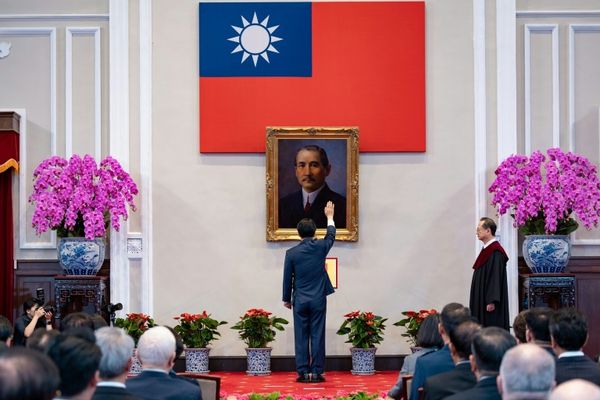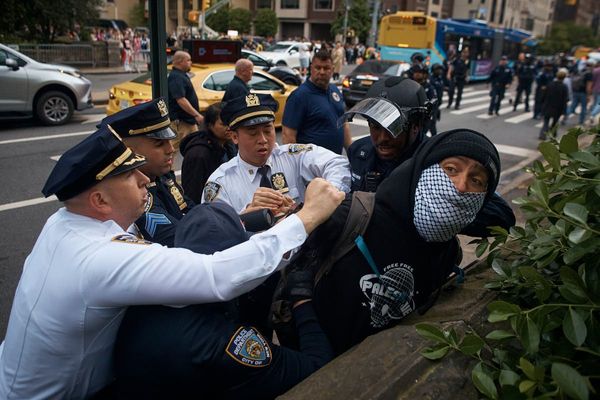
This week marked the death of James Hoge Jr., the legendary newsman who rose from a night police reporter at the Chicago Sun-Times in 1959 to the paper’s editor and publisher within a decade.
He steered the Sun-Times — and later the New York Daily News — at a time when the U.S. faced some of our most challenging public conflicts, from civil rights protests, wide and growing public skepticism over a war in Southeast Asia, and corruption and abuse of power by government leaders that would lead to the resignation of a president and a wave of public cynicism that lingers today.
The accolades are still coming in for Hoge, who went from leading two big city tabloids to working as editor and publisher of Foreign Affairs. Much of the focus has been on the big picture: The Pulitzer Prizes awarded to the publications under his leadership, the circulation increases, profitability achieved and boardroom intrigue.
But what mattered most to Hoge — someone I knew for three decades — was his own work as a journalist, and the critical importance of the work of the profession on the ground, often investigative, speaking truth to power in a world where transparency and analysis has been under assault, too often by established institutions in business as well as government.
One of his proudest achievements came in 1969 as editor of the Sun-Times. Local Black Panther Party leaders Fred Hampton and Mark Clark were killed during a police raid at their home. The initial news coverage and local and federal police statements suggested the activists had fired on police, and photos released purported to show a wall riddled with bullet holes as proof.
Hoge didn’t buy it. He had a source who urged him to take a closer look, despite the certainty and enthusiasm of front-page headlines of the incident published by his rival, the Chicago Tribune.
He brought reporter Joe Reilly and a photographer to Hampton’s apartment to walk the scene for themselves. They found the bullet holes were in fact nail holes from hanging pictures. And the result was an investigative piece with the headline “Those ‘bullet holes’ aren’t.”
The story stood the claims of the police and the state’s attorney’s office on their head and uncovered a law enforcement scandal of national importance that changed public views of racial protest and criminal justice.
Hoge believed the job of a journalist, more than anything else, involved shoe leather — that reporters should get out of the office and see for themselves what the actual facts are and not just rely on the claims of officials in positions of power.
He did his share of hitting the ground on stories and seeing things for himself.
Mentoring the next generation
In 1963, while at the Sun-Times, he boarded one of the buses filled with local citizens traveling to participate in the March on Washington. He said he got more on that bus ride than he ever did from Justice Department briefings or sit-downs with local politicians.
The same was true when at the 1964 Democratic National Convention in Atlantic City he saw Mississippi sharecropper and voting rights activist Fanny Lou Hamer challenge the racial composition of her state’s all-white delegation after the huge voter turnout of the state’s Black citizens, despite great voter suppression and human rights abuses to keep turnout low.
It was that commitment to investigative reporting, rooted in mixing it up in person and being skeptical of institutional rhetoric, that led Hoge to commit himself to mentoring and developing generations of new investigative reporters.
He was passionate about cultivating young talent both in the U.S. and abroad after the Berlin Wall fell and government transparency was critical to the success of the newly opening societies.
He became involved early in the growth of the International Center for Journalists and ultimately chaired its board and supported its commitment to training and equipping its global network of journalists to provide the trustworthy news essential to free and strong societies. Today, it is more than 160,000 strong.
Hoge spent his last years helping the organization fund a fellowship for investigative reporting in his name.
The lesson we take from Jim Hoge, more than any other, is that top-notch investigative reporting still depends on shoe leather — rolling up your sleeves, not being swayed by power or social media misinformation or the work of well-financed spin doctors — and putting a spotlight on the truth, no matter the personal consequences.
There are thousands of journalists out there following the same path, and the state of the world depends on their good work.
Jason H. Wright is principal of Geer Mountain Holdings LLC and serves on the board of directors for the International Center for Journalists.
The Sun-Times welcomes letters to the editor and op-eds. See our guidelines.
The views and opinions expressed by contributors are their own and do not necessarily reflect those of the Chicago Sun-Times or any of its affiliates.







